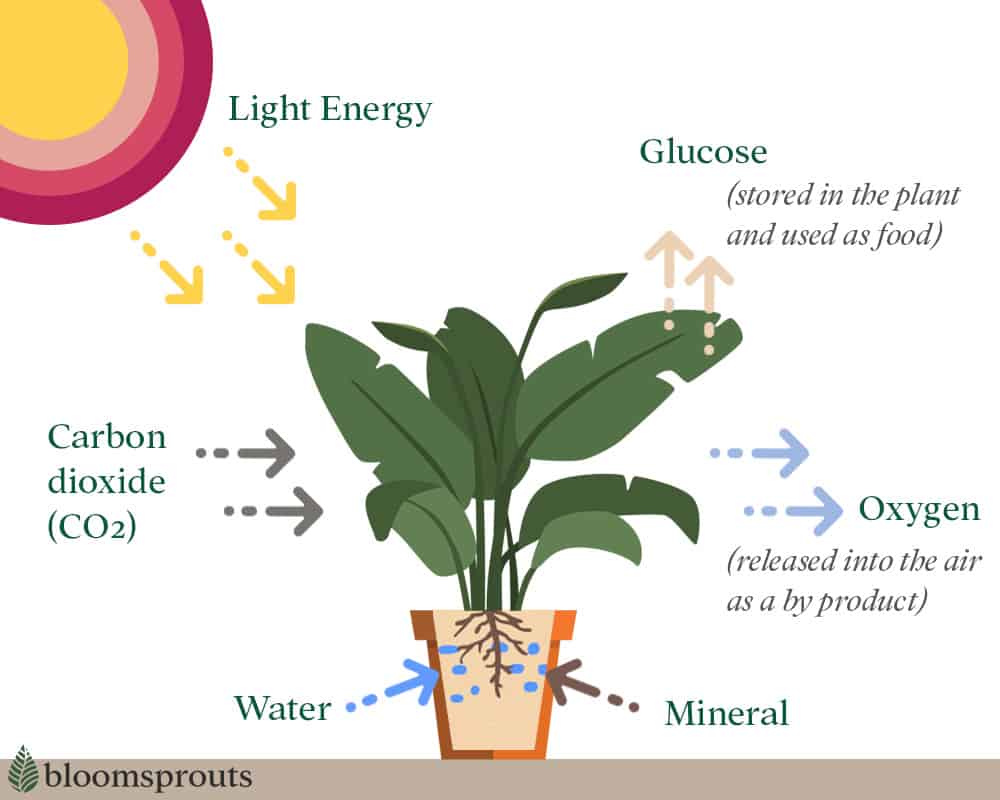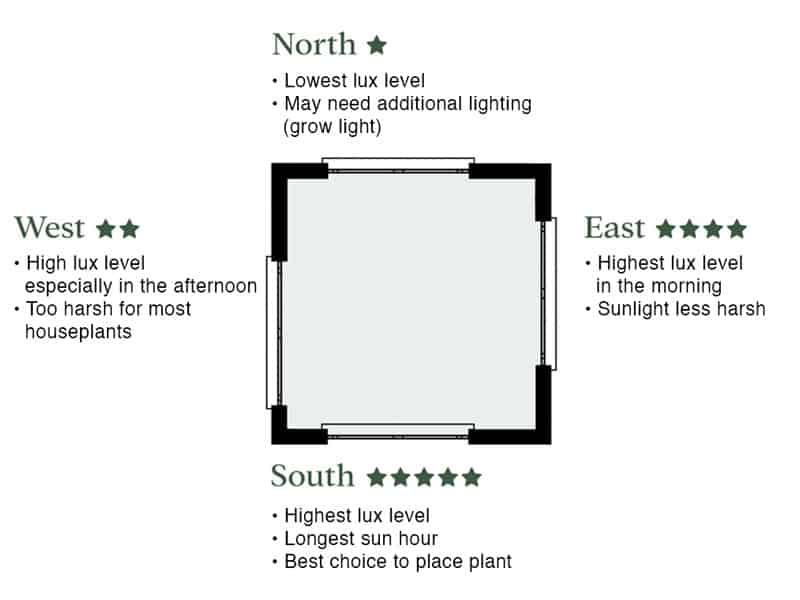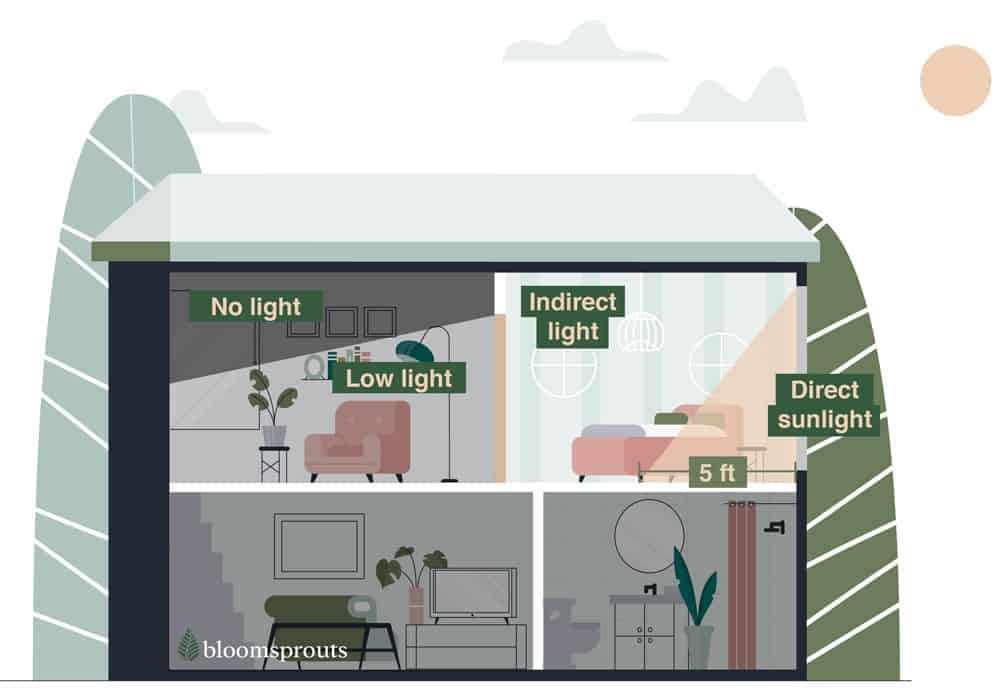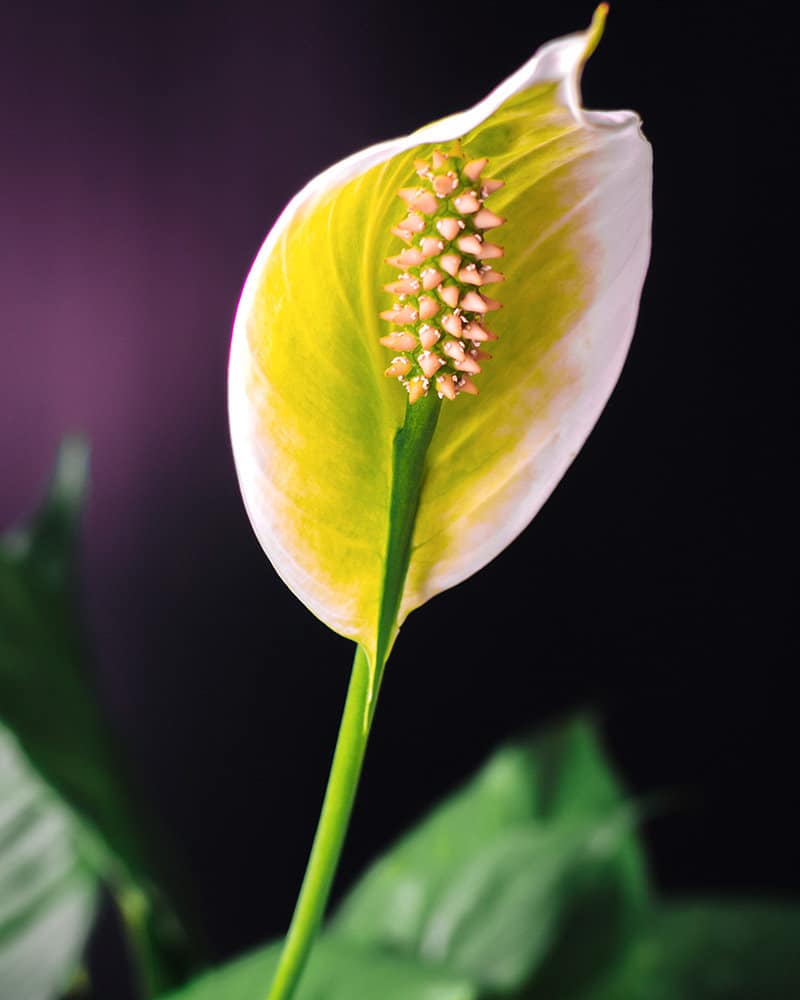
Are you wondering how much light your peace lily needs? If so, you’re not alone. Many people have questions about the lighting requirements for this popular houseplant.
Generally, peace lilies are fairly tolerant of low light conditions and can even thrive under fluorescent bulbs. However, they need at least six hours of bright, indirect light each day to bloom.
Keep reading to learn more about peace lily light requirements and how to provide the right amount of light for your plant.
Let’s get started!
Bloomsprouts may earn an affiliate commission if you purchase something through recommended links.
The Importance of Light for Peace Lilies
Like all plants, peace lilies (spathiphyllum) use light to create food for themselves through the process of photosynthesis.

Photosynthesis is the process where energy from sunlight converts carbon dioxide and water into glucose (sugar) and oxygen. Glucose is then used by the plant to create energy for growth.
In addition to providing energy for the plant, light also affects the peace lily’s leaf color. Without enough light, Peace lily will stop producing chlorophyll, the pigment that gives leaves their green color. This can cause the leaves to turn pale or yellow.
Last but not least, light is also necessary for peace lilies to bloom. In fact, peace lilies typically only bloom when they receive at least six hours of bright, indirect light a day.
Also read: Peace Lily Bloom: How to Get Spathiphyllum to Flower
How Much Light Does a Peace Lily Need?
In their natural habitat, peace lilies grow under the canopy of rainforests. As a result, they are used to lower light levels and do not need direct sunlight to thrive.
Generally, Peace lilies will do well in any location that receives bright, indirect light for at least six hours a day. This can be achieved by placing the plant near a south- or east-facing window, which has the highest lux and less harsh sunlight.

If you don’t have a location in your home that meets these requirements, you can also grow peace lilies under fluorescent lights.
To give your peace lily the best chance of success, make sure to position the fluorescent light about 12 inches away from the plant. And, be sure to leave the light on for at least 16 hours a day.
Difference Between Direct and Indirect Sunlight
Before going further, it’s important to understand the difference between direct and indirect sunlight.

Direct sunlight is the bright, intense light that travels along a straight path to the plant. This type of light is too harsh for most indoor plants, including peace lilies.
Indirect sunlight, on the other hand, is a softer light that has been diffused (by a sheer curtain) or reflected (by a nearby wall). This type of light is ideal for peace lilies.
Using Shadow Test to Determine Light Levels
A simple shadow test can help you determine if a location in your home receives direct or indirect sunlight.
To do this test, simply place your hand in the location where you want to grow your peace lily. If your hand casts a shadow, then the location is suitable for growing peace lilies.
If there is no shadow, then the location is getting direct sunlight and is not suitable for peace lilies.
Effects of too much light on Peace Lily
While peace lilies can tolerate low light conditions, they will not do well if they are exposed to direct sunlight for extended periods.
Too much direct sunlight can scorch the leaves of the plant. Also, it will cause the breakdown of chlorophyll, resulting in pale, bleached, or faded leaves. In extreme cases, the leaves of the plant will turn brown, crisp, and wilt.
If you think your peace lily is getting too much light, move it to a location with lower light levels immediately. You can also try shading the plant with a sheer curtain or placing it behind a piece of furniture.
Effects of low light on Peace Lily
Due to their tolerant nature, peace lilies can adapt to a wide range of lighting conditions. They can even thrive in fluorescent light, making them a great choice for an office or other low-light environment.
However, if a peace lily is not getting enough light, it will start to experience some negative effects.
For example, the plant will stop producing chlorophyll, which is necessary for the plant to stay green. As a result, the leaves of the plant will turn yellow or pale.

Furthermore, the plant will grow leggy, meaning that the stem will become long and thin as it tries to reach the light. Additionally, the plant may produce fewer flowers that are dull or greenish rather than white.
If you think your peace lily is not getting enough light, try moving it to a location with more light. You can also try using a grow light to supplement the plant’s needs.
More on that later.
Can Peace Lily survive without sunlight?
While peace lilies can tolerate low light conditions, they will not survive without any sunlight.
So, if you are placing your peace lily in a location without a window and doesn’t get any sunlight, you will need to supplement the plant with a grow light.
Grow lights are artificial lights that provide the plant with the light it needs to grow and thrive. They come in a variety of shapes, sizes, and intensities, so you can find one that’s perfect for your peace lily.
To learn more about grow lights and how to choose the right one for your peace lily, check out this article.
Can Peace Lily live outdoors?

If you have a porch, patio, or garden, you might wonder if you can grow peace lilies outside.
The answer is yes, but there are a few things you need to know before you do.
Can Peace Lily Plants take full sun?
Due to their sensitivity to direct sunlight, peace lilies should only be placed in an area that receives indirect sunlight or filtered light.
Direct sunlight will scorch the leaves and bloom of the plant and even cause the leaves to turn brown and wilt.
So, if you are growing your peace lily outdoors, make sure to place it in an area that is shaded for at least part of the day. This can be done by placing the plant beneath a tree, on an east-facing porch, or next to a building.
You can also try using a sheer curtain or blind to filter the light and protect the plant from direct sunlight.
Can Peace Lily survive outdoors during Winter?
Winter comes with its own set of challenges, and if you’re not careful, your peace lily can succumb to the cold weather and low light levels.
While light levels can be increased with the use of a grow light, the cold is a bit more difficult to combat.
If you live in an area where the temperature gets below 60°F (15°C), it’s best to bring your peace lily indoors for the winter months.
This will help protect the plant from the cold weather and allow it to continue to thrive.
If you can’t bring your peace lily indoors, you should grow it in a sheltered location outdoors. This could be beneath a tree or next to a building where it will be protected from the wind and cold weather.
You can also try wrapping the plant in burlap or using a plant cover/blanket to insulate it from the cold.
With a little bit of care, you can successfully grow peace lilies outdoors all year long!
